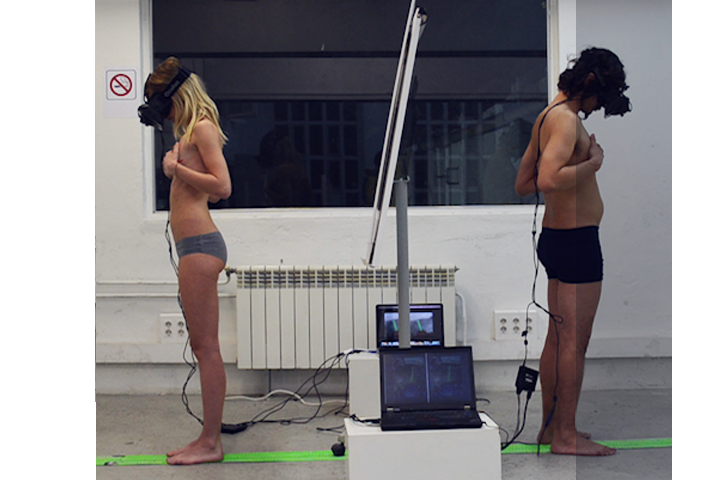Oculus Rift Lets You Inhabit Someone Else's Body
Following the release of the Oculus Rift development kits, a lot of fascinating new projects have been cropping up. The latest one making the rounds is an experiment called "Gender Swap."
The Oculus Rift scored our "Best of CES" for a second year in a row, enrapturing us with promise of a new generation of gaming. But it's not just the games industry that's found use for the VR accessory.
Following the release of the Oculus Rift development kits, a lot of fascinating new projects have been cropping up. The latest one making the rounds is an experiment called "Gender Swap." The experiment uses the Machine to be Another software and first person cameras to swap the video feeds of two Oculus Rift systems, allowing one person to effectively see as if they were someone else.
The experiment is pretty interesting. Before they strap on the gear, both participants hash out what movements they won't make. Each action must be constantly agreed upon by both users as they "feel" their new body.
The co-op overseeing the project hopes that through this system they can "investigate issues like Gender Identity, Queer Theory, feminist technoscience, Intimacy and Mutual Respect." Those are some pretty lofty goals, but their approach is something that's just as novel.
Some of their other Oculus Rift projects include having a mother and her child share stories, and a conversation between a woman in a wheelchair and one who isn't. These may sound like small projects, but from the descriptions of the participants, the experience seems to be a pretty powerful one.
The technical aspect of it is equally fascinating though. The team's documentation suggests that getting everyone involved to make very slow, calculated movement is essential for the experiment to work. That tends to match up pretty well with similar statements from other developers working with VR. The human brain is a strange machine. For how advanced and adaptable it tends to be, it's also easy to trip up, confuse and make the owner of the aforementioned brain feel a little ill.
You can see a video of their work here, though there is some nudity.
Get Tom's Hardware's best news and in-depth reviews, straight to your inbox.
-
de5_Roy that's interesting. although it's a few steps short of hooking up a few billion vr-equipped individuals connected to a huge vr grid made by machines to use humans as energy sources and programs inhibit their bodies and minds... :whistle: ..........i am talking about nsa... :PReply -
dimar http://www.designboom.com/art/virtual-gender-swap-with-the-oculus-rift-by-beanotherlab-01-21-2014/Reply -
alfaalex101 How many nights I spent wondering if my girl could feel the same way I do - in my pants. Now we are closer to this possibility more than ever! (not really)(I have no girl)Reply -
spentshells Replythat's interesting. although it's a few steps short of hooking up a few billion vr-equipped individuals connected to a huge vr grid made by machines to use humans as energy sources and programs inhibit their bodies and minds... :whistle: ..........i am talking about nsa... :P
I like the way you think -
acadia11 Well, you knew what anyman would do if he had a woman's body , sure enough play with his boobs, and the video didn't disappoint.And of course, the first thing a woman would do if she had a d..k, yup you guessed it, look at it!!! And that's exactly what happened.The moral of story, human beings just look for really complcTed ways to have sex!!!Reply
